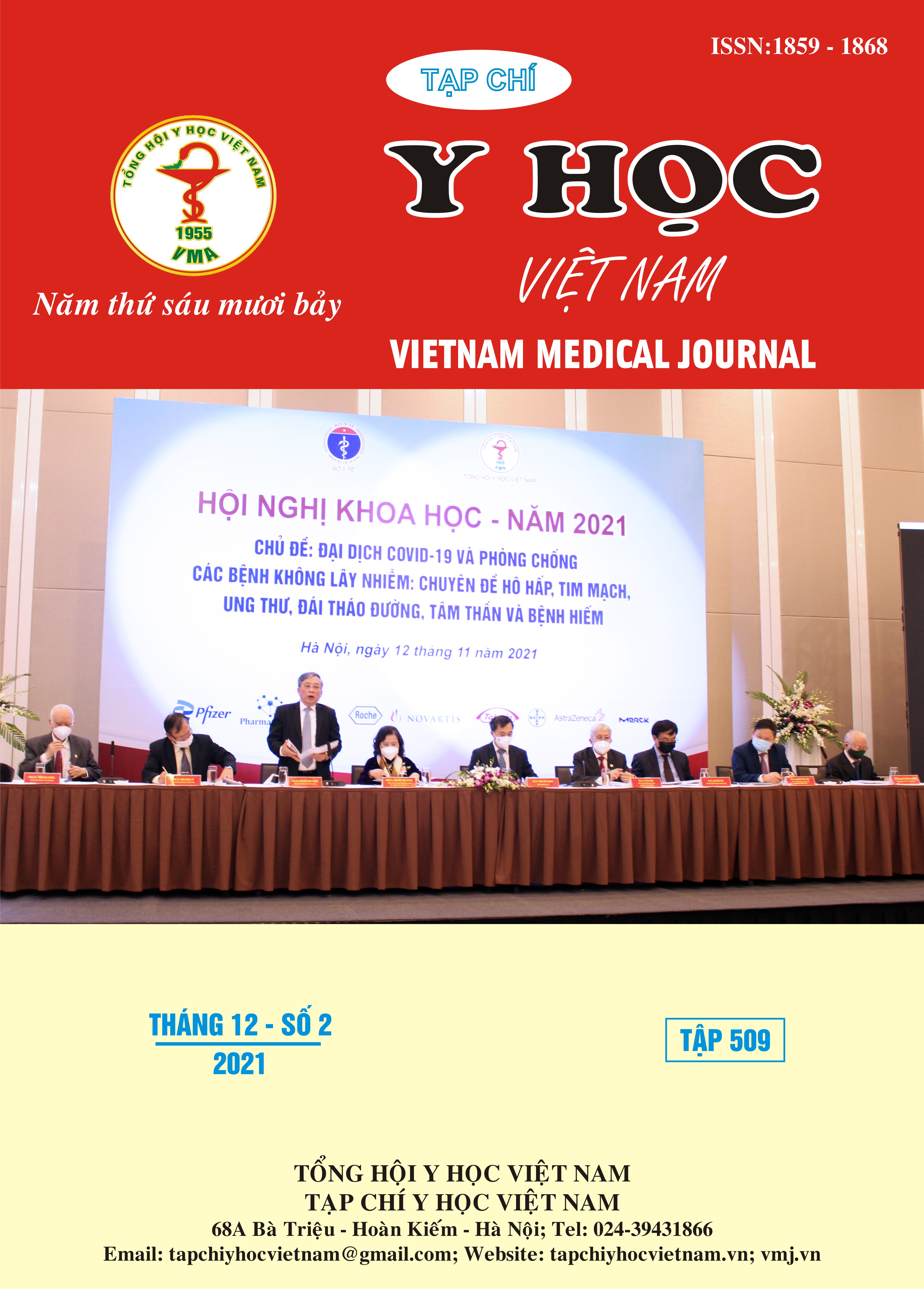ĐÁNH GIÁ SỰ SAI LỆCH KẾT QUẢ XÉT NGHIỆM DOUBLE TEST VÀ TRIPLE TEST TRONG CÁC ĐIỀU KIỆN BẢO QUẢN MẪU KHÁC NHAU
Nội dung chính của bài viết
Tóm tắt
Mục tiêu nghiên cứu: xác định tỷ lệ nguy cơ hóa sinh thay đổi trong xét nghiệm Double test ở các điều kiện bảo quản mẫu khác nhau thông qua nồng độ các các dấu ấn hóa sinh free beta-hCG, PAPP-A. Đánh giá sự thay đổi nồng độ của AFP, beta-hCG và uE3 trong xét nghiệm Triple test ở các thời gian lưu mẫu khác nhau. Đối tượng và phương pháp nghiên cứu: đối tượng gồm 15 mẫu huyết thanh của 15 thai phụ mang thai từ 11 tuần đến 13 tuần 6 ngày. Xác định nồng độ free beta-hCG và PAPP-A ở các điều kiện: tách huyết thanh và định lượng trong 12 giờ; bảo quản 2-8°C trong 96 và 120 giờ (tách huyết thanh và không tách huyết thanh). Kỹ thuật miễn dịch định lượng trên hệ thống Immulite 2000 và 1000, phần mềm tính nguy cơ Prisca. Nghiên cứu mô tả, cắt ngang, phân tích so sánh; Xác định giá trị trung vị, so sánh nồng độ AFP, Beta-hCG và uE3 từ 818 kết quả triple test của phụ nữ mang thai từ 15 đến 21 tuần 6 ngày với thời gian lưu mẫu từ 24 giờ đến 96 giờ. Kỹ thuật miễn dịch định lượng trên hệ thống Immulite 2000, phần mềm tính nguy cơ Prisca. Phân tích số liệu trên phần mềm SPSS. Nơi thực hiện Đại Học Y Dược Thành Phố Hồ Chí Minh. Kết quả: Double test: so sánh với mẫu bảo quản 2-7°C với mẫu bảo quản 12 giờ ở nhiệt độ phòng thì kết quả là: Sau 96 giờ: free beta-hCG và PAPP-A không có sự thay đổi giá trị trung vị nồng độ, nguy cơ hóa sinh giảm 10% ở mẫu tách và không tách huyết thanh. Sau 120 giờ: trung vị nồng độ PAPP-A tuần thai 11 tăng 16,1 % (mẫu tách huyết thanh); tăng 3,5% (không tách huyết thanh ); Trung vị nồng độ Free beta-hCG không thay đổi đối với tất cả tuần thai. Nguy cơ hóa sinh lần lượt giảm 15% ở mẫu tách huyết thanh và 11% ở mẫu không tách huyết thanh. Triple test: nồng độ AFP giảm với các mẫu lưu trữ 48 giờ (21,4%), giảm ở 72 giờ (23%) và tăng khi lưu trữ 96 giờ (31.9%). Nồng độ Beta-hCG tăng dần theo thời gian lưu trữ mẫu 48 giờ (38%), 72 giờ (37,2%), 96 giờ (47,9%). Nồng độ uE3 tăng trong mẫu lưu 48 giờ (41,9%), không thay đổi ở 72 giờ và 96 giờ, tuy nhiên sự thay đổi chỉ xảy ra ở một số tuần thai. Kết luận: mẫu thử được bảo quản ở 2-8°C trong 96 giờ không làm thay đổi giá trị nồng độ free beta-hCG, PAPP-A nhưng làm giảm 10% giá trị nguy cơ hóa sinh. Khi bảo quản mẫu 120 giờ ở 2-8°C nồng độ free beta-hCG không thay đổi, trung vị nồng độ PAPP-A tăng ở tuần thai thứ 11 cao nhất là 16,1% và nguy cơ sinh hóa giảm khoảng 15%. Thời gian lưu mẫu 48 giờ dẫn đến nồng AFP giảm và UE3 tăng. Lưu mẫu 72 giờ và 96 giờ làm tăng nồng độ AFP. Nồng độ Beta-hCG tăng dần theo thời gian lưu trữ mẫu 48,72,96 giờ.
Chi tiết bài viết
Từ khóa
Prenatal screening test, Double test, Triple test, biochemical risk change
Tài liệu tham khảo
2. Văn Hy Triết (2014). Nghiên cứu ảnh hưởng của thời gian và nhiệt độ bảo quản huyết thanh trên xét nghiệm định lượng PAPP-A và Free βHCG huyết thanh trong sàng lọc hội chứng Down. Luận văn thạc sĩ Hóa sinh, Trường Đại học Khoa học Tự Nhiên, Thành phố Hồ Chí Minh.
3. Cruz J. C., G. Minekawa and N.N.Rmaiz, K.H (2010). Effect of temperature on free beta-human chorionic gonadotropin and pregnancy-associated plasma protein-A concentration. Ultrasound Obstet Gynecol. 36(2): 141-146.
4. J Massé, G Cherian, J Forest (2000). Transportation of maternal serum specimens for screening for chromosomal aneuploidies: effect of seasonal variations, distance, and freezing on the stability of the biological markers.Clin Biochem. 33 (4):273-277.
5. K Spencer, P Carpenter, R Anderson and D.A.Krantz (1993). Stability of intact chorionic gonadotropin (hCG) in serum, liquid whole blood, and dried whole-blood filter-paper spots: impact on screening for Down syndrome by measurement of free beta-hCG subunit. Clin Chem. 39(6): 1064-1068.
6. Lambert-Messerlian G. M. E, E. E.Malone and G.E.C.F.D. Palomaki, J.A.D’Alton,M.E (2006). Stability of first- and second-trimester serum markers after storage and shipment. Prenat Diagn. 26 (1):17-21
7. Louise F Brown C. H. S., Graham Tydeman (2011). Stability of inhibin A and unconjugated oestriol in the second trimester of pregnancy.Ann Clin Biochem. 48:72-74.
8. Nicholas J. Cowans A. S., Johanna H., and a.K.S.Minna-Maarit Makel. (2010). PAPP-A and free β hCG stability in first trimester serum using PerkinElmer AutoDELFIA and DELFIA Xpress systems. Prenatal Diagnosis. 30: 127-132.


